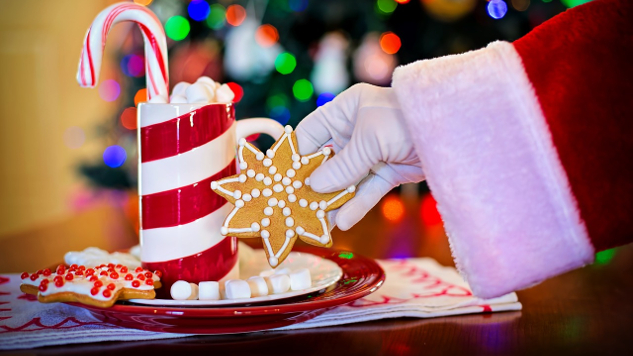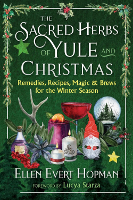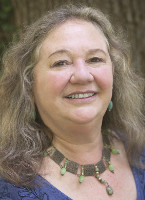
Image by Jill Wellington
Yule Logs, bonfires, candles lit in windows, and the strings of twinkling electrical lights we hang on our homes and trees today are a faint memory of the winter fire festivals and rituals our ancestors once cherished—and relied on for protection against the cold, the dark, and the roaming Spirits of winter.
Ancient Origins of the Yule Festival
Yule is the word for the ancient northern European winter festival that spans the Solstice season. The original Yule celebrations lasted from mid-November to mid-January, comprising great festivals and invocations of light and fire, spanning the coldest, darkest season. This was also the time when farm animals were slaughtered, so there was plenty of meat for feasting—and a lot of alcohol consumption.
Danish Vikings brought Yule to Britain in the ninth and tenth centuries, and by the thirteenth century it had become attached to Christmas ceremonies. But the traditional Christian celebration of Jesus’s birth on December 25 itself arises from more ancient, pre-Christian roots. It was Mithras, the Persian God of light, of the rising Sun, of contracts, covenants, and friendship, the all-seeing protector of truth, and the guardian of cattle, the harvest, and the waters, who was originally said to have been born on December 25.
Mithras was popular with Roman soldiers, and by the fourth century he was linked to Sol Invictus (Unconquered Sun) as the official Sun God of the Roman Empire. Roman Christians eventually adopted Mithras’s date of birth and powerful all-seeing solar attributes, grafting them onto their savior Jesus of Nazareth.
Modern Traditions – Ancient Roots
Many of our modern traditions arise from ancient roots. Our modern Santa Claus may be a secular version of Saint Nicholas, a fourth-century bishop who liked to distribute aid to the needy. Or he may be a modern version of Odin or Neptune, both bearded men who traveled widely and protected sailors. Others say he is the incarnation of a shamanic mushroom Spirit, seen by Siberian shamans when they partake of Amanita muscaria—a red mushroom with white spots that is still a feature of Christmas decorations in Scandinavia and other northern areas.
Four thousand years ago, the ancient Egyptians decorated their homes with greenery, such as the fronds of the date palm, at the festival celebrating the rebirth of the God Horus (the son of the Goddess Isis who was born hanging in a tree). The festival was a twelve-day observance in honor of the returning Sun and also a celebration of the completion of the date harvest.
Meanwhile, the ancient Romans decorated their homes with vines and other greenery and shared gifts, especially candles, at the midwinter festival of Saturnalia, in honor of the agricultural God and lord of the harvest, Saturn. They hung metal ornaments on trees, usually depictions of Saturn or the deity of the household, and celebrated with feasting, merrymaking, drinking, gambling, wandering the streets naked, singing songs, and generally making as much mischief as possible.
In Scandinavian and Germanic areas in midwinter, families burned a Yule Log in the hearth, wassailed their fruit orchards, and displayed sheaves of Wheat, because if you were lucky enough to have a good Wheat harvest, your display of it carried the luck into the new year. Germanic tribes decorated trees with fruits and candles in Odin’s honor at the Solstice.
In Celtic areas, mummers and guisers went from home to home spreading the Spirit of the Land Goddess throughout the villages, and Druids gathered Mistletoe as a medicinal and magical aid.
Mix-and-Match Traditions
All of these traditions (and many, many more) have come down to us with a certain mix-and-match character. We erect Christmas trees and decorate them with ornaments and lights. We string lights outside our homes, hang Mistletoe and Holly, and go caroling with neighbors or at church. We honor the birth of a God, invoke the powers of Spirits to protect us from the dark, and stand in ritual to ask the Sun to return. We visit, gift, toast, dance, feast, and drink a-plenty.
Some of us faithfully practice time-honored family, cultural, or religious rituals. Others simply enjoy the merrymaking. Still others gather to honor the turn of the Wheel of the Year.
Regardless of our particular tradition or inclination, the time of the Winter Solstice, Yule, Christmas, and New Year’s is filled with meaning and magic.
Copyright 2023. All Rights Reserved.
Adapted with permission of the author/publisher.
Article Source:
BOOK: The Sacred Herbs of Yule and Christmas
The Sacred Herbs of Yule and Christmas: Remedies, Recipes, Magic, and Brews for the Winter Season
by Ellen Evert Hopman
 Ellen Evert Hopman shares folklore, recipes, rituals, and crafts to enliven your Yuletide observance. She explores the origins of the Christmas tree and Santa Claus as well as holiday Spirits and Yuletide animals. She explains how to perform Winter Solstice divinations and make traditional foods and drinks such as Elizabethan gingerbread cookies and Wassail. And she looks in depth at the medicinal and magical properties of the many herbs, barks, and berries associated with the Christmas and Yuletide season such as Frankincense and Myrrh, Cinnamon, Nutmeg, Hibiscus, Bayberry, and many more.
Ellen Evert Hopman shares folklore, recipes, rituals, and crafts to enliven your Yuletide observance. She explores the origins of the Christmas tree and Santa Claus as well as holiday Spirits and Yuletide animals. She explains how to perform Winter Solstice divinations and make traditional foods and drinks such as Elizabethan gingerbread cookies and Wassail. And she looks in depth at the medicinal and magical properties of the many herbs, barks, and berries associated with the Christmas and Yuletide season such as Frankincense and Myrrh, Cinnamon, Nutmeg, Hibiscus, Bayberry, and many more.
This guide offers practical and magical ways to celebrate and honor the darkest days of the year.
For more info and/or to order this book, click here. Also available as a Kindle edition.
About the Author
 Ellen Evert Hopman has been a teacher of herbalism since 1983 and is a professional member of the American Herbalists Guild. A member of the Grey Council of Mages and Sages and a former professor at the Grey School of Wizardry, she has presented at schools and workshops across the United States and Europe.
Ellen Evert Hopman has been a teacher of herbalism since 1983 and is a professional member of the American Herbalists Guild. A member of the Grey Council of Mages and Sages and a former professor at the Grey School of Wizardry, she has presented at schools and workshops across the United States and Europe.
A Druidic initiate since 1984, she is the current Archdruid of Tribe of the Oak (Tuatha na Dara), an international Druid Order, a founding member of The Order of the White Oak (Ord Na Darach Gile), a Bard of the Gorsedd of Caer Abiri, and a Druidess of the Druid Clan of Dana.
Visit her website: EllenEvertHopman.com






























